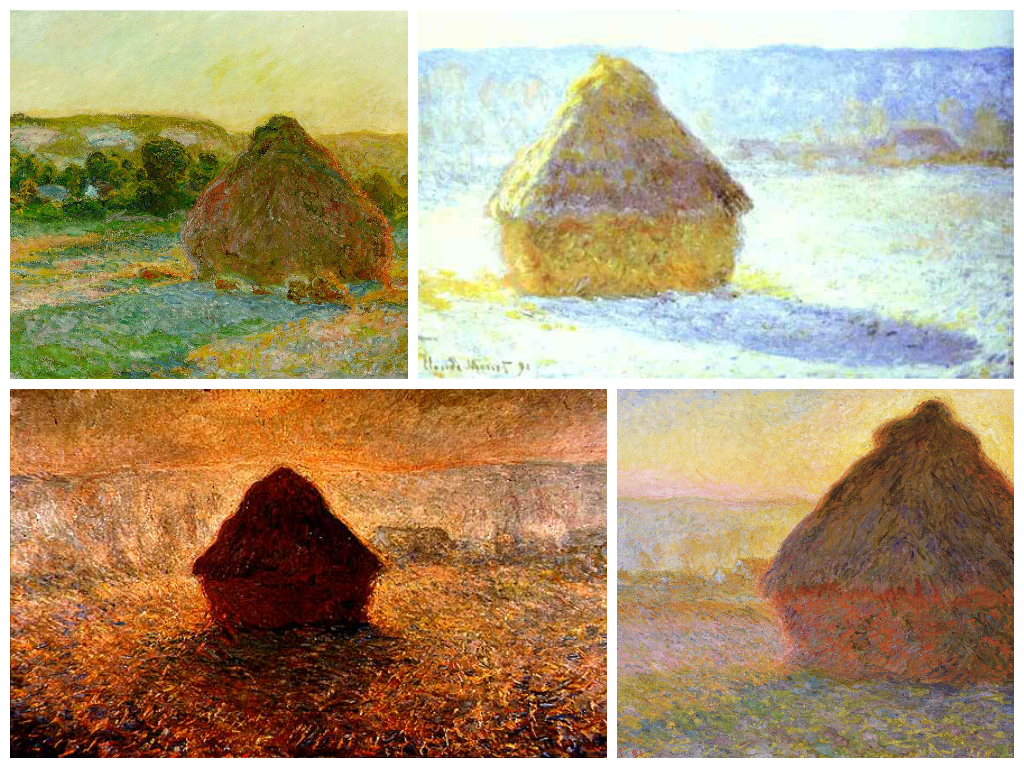Haystacks

The principal subject of each painting in the series is stacks of harvested wheat (or possibly barley or oats: the original French title, Les Meules à Giverny, simply means The Stacks at Giverny). The title refers primarily to a twenty-five canvas series (Wildenstein Index Numbers 1266–1290) which Monet began near the end of the summer of 1890 and continued through the following spring, though Monet also produced five earlier paintings using this same stack subject.
The series is famous for the way in which Monet repeated the same subject to show the differing light and atmosphere at different times of day, across the seasons and in many types of weather.
The stacks depicted in the series are commonly referred to in English as hay, wheat or grain-stacks. In reality they stored sheafs of grain primarily for bread—so wheat [or possibly barley or oats]—and not hay, an animal food. The 10-to-20-foot (3.0 to 6.1 m) stacks were a way of keeping the sheafs dry until the grain could be separated from the stalks by threshing. The local method of storing and drying unthreshed-grains was to use straw, or sometimes hay, as a thatched 'roof' for the stack, shielding the wheat, barley or oats from the elements until, once dry-enough, they could be threshed. The threshing machines then traveled from village to village. Thus, although the grain was harvested and the stacks were built by July, it often took until the following spring or even later—so through all the light and atmosphere changes of summer, autumn, winter and spring—for all the stacks to be reached by the threshing-machines. Grain storage/drying-stacks like these became common throughout Europe in the 19th century and survived until the inception of combine harvesters. Although the shapes of stacks were regional, in Normandy, where Giverny is situated, it was common for them to be round with quite steeply-pitched thatched 'roofs'—just as Monet painted.